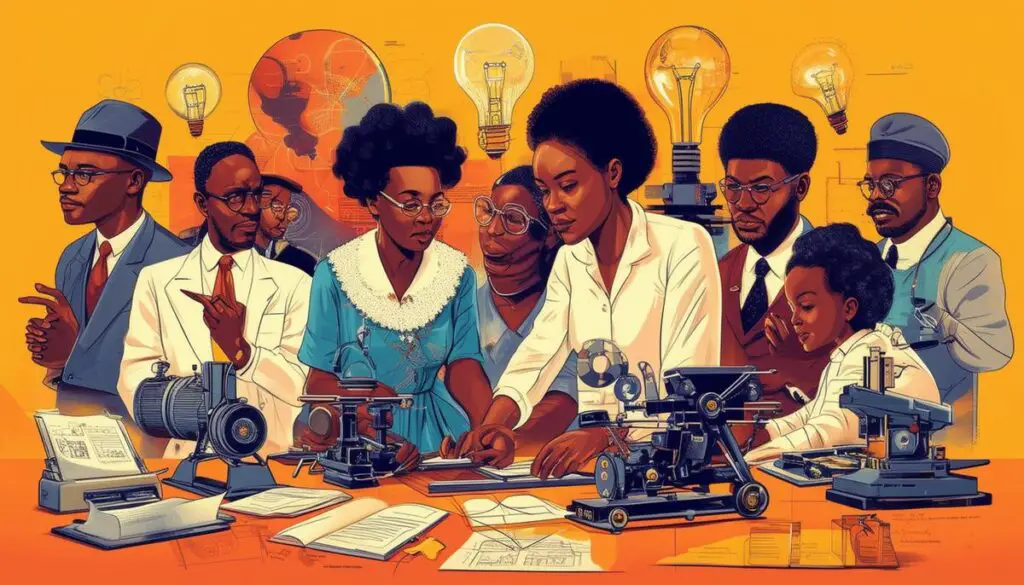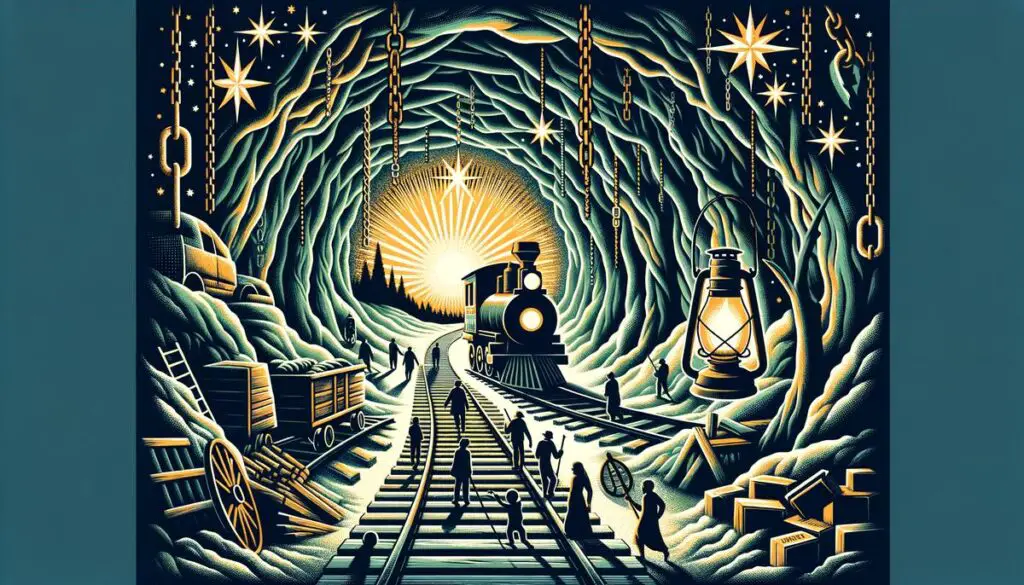Historical Accuracy
When exploring Julius Caesar's life through various adaptations, whether on screen, in books, or on stage, there is often a blend of fact and fiction. The true nature of Caesar's era, personality, and political maneuvers are sometimes embellished for dramatic effect. His relationships and interactions are commonly dramatized. Historically, Caesar had complex affiliations with figures like Cleopatra and Brutus, but adaptations tend to amplify these relationships, occasionally altering timelines or motivations for a more compelling narrative.
In many films, the pivotal moment of Caesar's assassination, "The Ides of March," is depicted with heightened drama emphasizing the shock and betrayal. Historical accounts suggest it was a carefully planned event by multiple conspirators, yet adaptations often spotlight Brutus's role, simplifying the event to increase emotional impact. This provides audiences with a more straightforward narrative but can oversimplify ancient Rome's political complexity.
The portrayal of Caesar as either a tyrant or visionary leader varies widely across different media, reflecting the creators' interpretations rather than strict historical accuracy. While scholars debate Caesar's ambition and methods, adaptations might heavily favor one perspective, influencing how audiences perceive his legacy.
Adaptations also frequently take liberties with Caesar's military campaigns, compacting timelines, and exaggerating or downplaying certain battles to suit the story arc or thematic focus. For instance, his conquest of Gaul is sometimes shown as a more rapid achievement than the lengthy, brutal campaigns described in historical records.
Moreover, Caesar's physical appearance in media adaptations often follows the tradition of heroic portrayal rather than historical descriptions or artifacts like busts and coins. This can distort how modern audiences imagine historical figures, attributing contemporary ideals of leadership and heroism to them.
Despite these deviations, such adaptations play a vital role in maintaining interest in ancient history. They spark curiosity and can lead people to seek out the real stories behind the dramatized tales. However, for those curious about the historical Julius Caesar, it's beneficial to look beyond historical fiction to academic resources and primary accounts grounded in archaeological and historical evidence. This approach provides a more comprehensive picture of the Roman leader's life, his impact on history, and the world of ancient Rome.
While artistic liberties are often taken, it's intriguing to see how each adaptation reflects the time in which it was created, serving as both a mirror to the past and a lens through which contemporary audiences can engage with history. By comparing these varied portrayals with the historical record, we gain insight into not only Julius Caesar but also how history is continuously reinterpreted to reflect or question current values and beliefs.
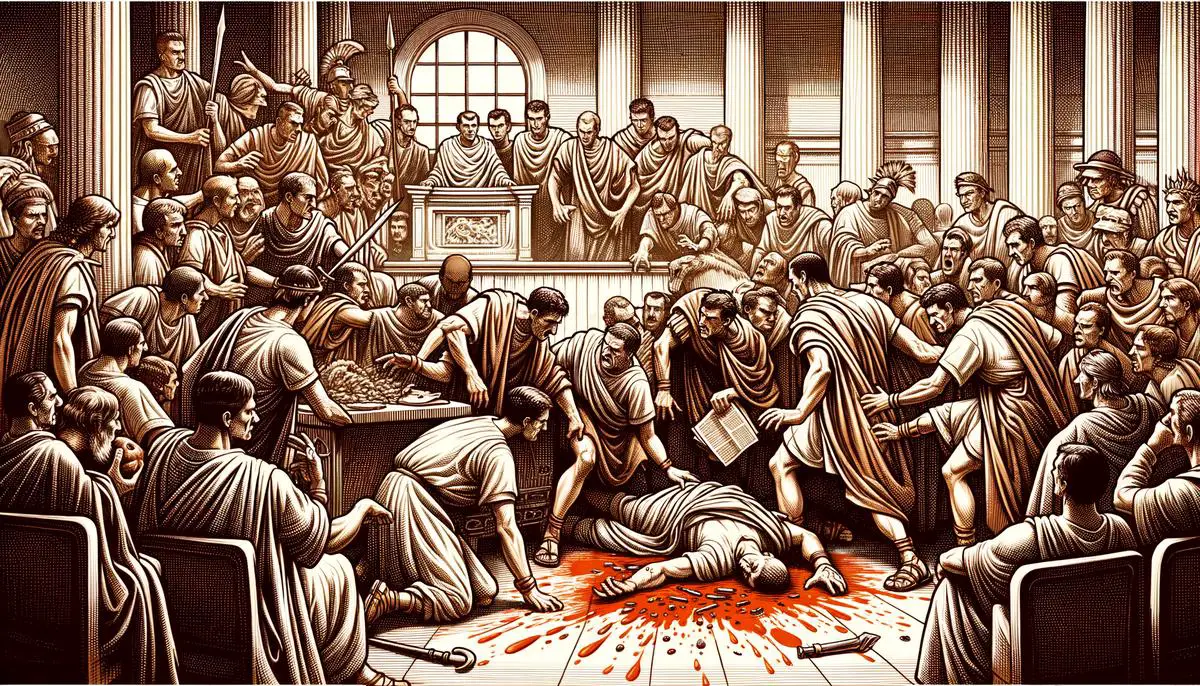
Cultural Impact
The cultural impact of Julius Caesar's life adaptations and the broader ancient Roman narrative is significant, permeating various aspects of modern society and culture. These adaptations, spanning genres and media, collectively contribute to the mosaic of contemporary understanding and engagement with historical narratives. By examining specific examples across films, literature, stage productions, and educational materials, a picture emerges of how these narratives continue to shape public perception and cultural discourse.
Consider, for instance, the immense influence of William Shakespeare's "Julius Caesar." This early 17th-century play remains a staple in educational curricula worldwide. Its famous lines and scenes provide a framework for discussions about betrayal, political ambition, and the public and private self that resonate with students and scholars alike. By focusing on the ides of March and Brutus's moral quandary, Shakespeare's work has cemented these aspects into the cultural consciousness far beyond academic settings—merging historical inquiry with moral and philosophical reflection.
In cinema, films like "Cleopatra" (1963) showcase the entanglement of personal and political spheres in Caesar's life while also reflecting contemporary concerns and interpretations of historical narratives as tales of glamour, power, and intrigue. This magnification of Caesar's romantic liaisons serves not only as entertainment but subtly informs audiences' perceptions of past realities, grafting modern sensibilities onto ancient figures.
Documentaries and docudramas introduce another layer of influence. By striving for historical fidelity, through expert interviews and archaeological evidence, they act as counterpoints to more dramatized adaptations. Their educational potential is immense, offering access to informed perspectives on Caesar's military strategies, governance, and the socio-political context of his rule. However, even within these more factual presentations, narrative framing characterizes Caesar in specific lights—champion of the Republic, military genius, or ambitious tyrant—highlighting the complexity of historical interpretation.
Moreover, the exploration of Caesar's life in video games and virtual reality experiences brings ancient Rome into interactive spaces, allowing users to experience reconstructions of historic events and environments. These platforms blend learning with entertainment, offering immersive experiences that have the potential to deepen interest in history among younger audiences, fostering a connection to the past through active participation rather than passive reception.
The diverse nature of these adaptations signifies how Julius Caesar remains a figure of endless fascination and demonstrates the varied ways his life and times continue to influence modern society and culture. Through their broad appeal, these narratives not only entertain but also educate, sparking interest in Roman history and prompting reflection on contemporary issues by drawing parallels between past and present. The role these adaptations play in shaping perceptions of historical figures and events underscores the power of storytelling in bridging time, teaching us as much about ourselves and our times as about the figures they portray.
Thus, while artistic accounts of Caesar's life may diverge from historical accuracy, their cumulative impact lies in their ability to keep the dialogue between past and present alive, demonstrating history's relevance in contemporary culture and its enduring ability to captivate and provoke thought across centuries.
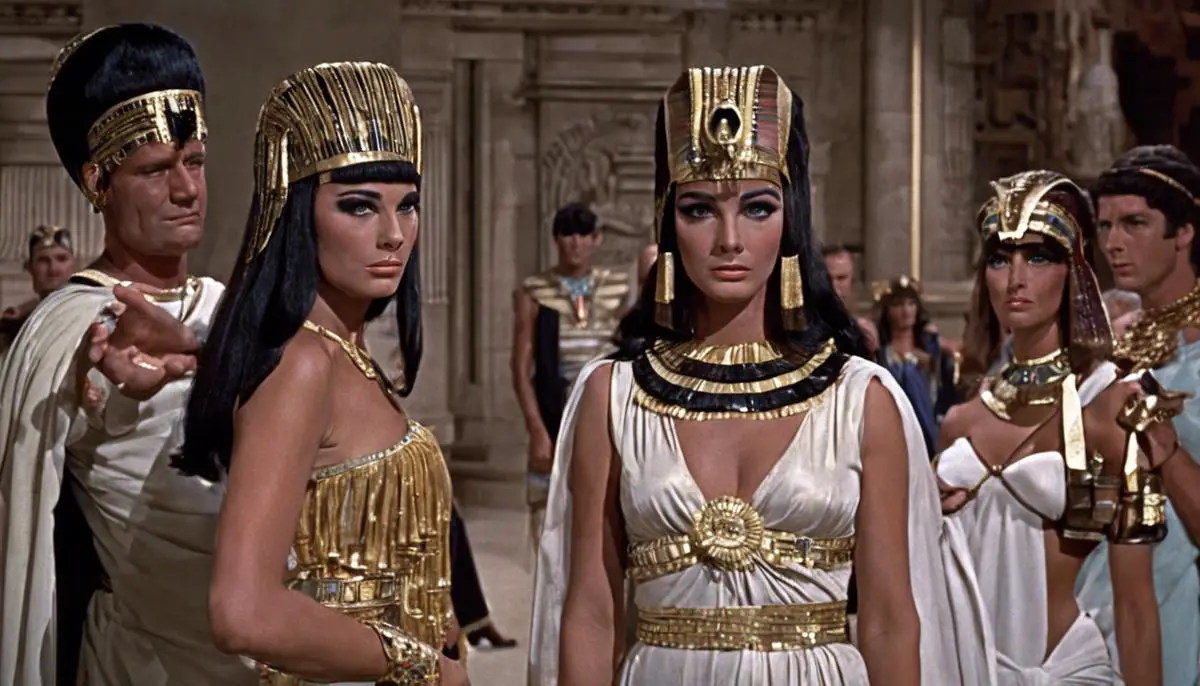
Character Interpretation
As we examine the varying portrayals of Julius Caesar across adaptations, we encounter a spectrum that presents him ranging from a noble hero to a tyrannical dictator. This wide variation reflects not only artistic freedom but also the nuanced view of Caesar's complex persona through the lens of different eras and creators' perspectives. Each interpretation, deeply influenced by the creators' cultural and historical context, contributes a unique shade to Caesar's character, enriching our understanding of this multifaceted figure.
The noble hero portrayal of Julius Caesar often emphasizes his visionary plans for the Roman Republic, highlighting his efforts to implement reforms aimed at stabilizing and strengthening the empire. In these adaptations, Caesar's drive for power is depicted as a means to an end – the end being the prosperity and expansion of Rome. These versions tend to underscore his military genius and his role in extending Roman territory over Gaul and beyond, implicitly arguing that his actions, although ambitious, were ultimately beneficial for Rome's legacy. This interpretation resonates with societies or periods that value strong leadership and the expansionist promotion of civilization, mirroring their contemporary leaders' aspirations or the ideological fabric of the era.
Conversely, portrayals of Caesar as a tyrannical dictator often focus on his overthrow of the Roman Republic's democratic principles and his rise to consolidate power. Here, the narrative emphasis shifts to his declaration as "dictator in perpetuity," an act seen as the death knell for the republic. These adaptations explore the ethical and moral dilemmas surrounding absolute power, political backstabbing, and the mortal consequences of unchecked ambition. Within this frame, Caesar is often depicted as a character who is both revered and feared, a cautionary tale about the perilous path of despotism. Such interpretations could be reflective of periods of political turbulence within the societies that produce them or exhibit a more critical stance towards autocratic governance.
Notably, some adaptations straddle the line between these polarized views, presenting Caesar as a flawed yet pioneering leader. In these nuanced narratives, Caesar's personal and political life are intricately woven to display a profoundly human man – ambitious yet vulnerable, powerful yet susceptible to betrayal. Through this lens, viewers are invited to empathize with Caesar, understanding his motivations within the context of his tumultuous times. This balanced approach might resonate with contemporary audiences living in an era marked by complex leadership challenges, where simplistic judgments are increasingly scrutinized.
Interestingly, the diversity in character interpretation also highlights how each generation re-imagines historical figures to reflect or critique their own societal norms and values. Whether depicted as a hero or a villain, each adaptation of Julius Caesar inherently becomes a discourse on leadership, power, and morality relevant to its time.
In analyzing the various artistic portrayals of Caesar, we navigate a mosaic of human complexities, ideologies, and temporal reflections that significantly contribute to our collective memory of this iconic historical figure. These varied interpretations encourage viewers and readers not only to question the legacies left by great leaders but also to consider how history is perpetually reevaluated through the lens of cultural and temporal shifts. By engaging with these diverse characterizations, we gain insight into both the immutable influence of Julius Caesar and the ever-evolving nature of historical narrative interpretation.
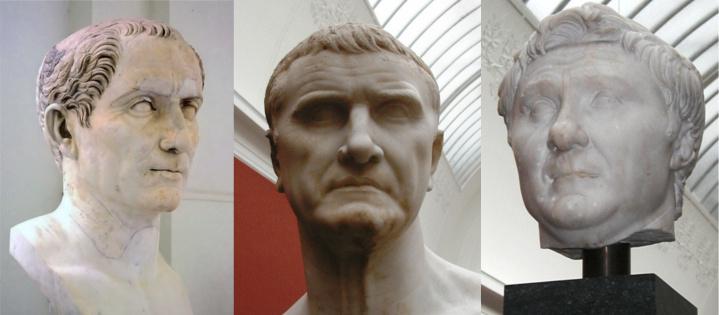
Adaptation Evolution
The adaptations of Julius Caesar's life have evolved considerably over time, adjusting to reflect the changing landscapes of society, technology, and artistic expression. From early Roman accounts and Shakespeare's iconic play to contemporary cinema and digital interpretations, the story of Julius Caesar has been retold through countless lenses, each offering fresh insights and reflections of their era's zeitgeist.
In the early post-Roman era, accounts of Caesar's life were primarily preserved in texts like those of Plutarch, which later served as source material for medieval and Renaissance dramatists and poets. In these texts, Caesar often emerges as a larger-than-life figure, a lens through which authors could explore themes of power, morality, and the nature of leadership. The advent of the printing press in the late 15th century democratized access to these stories, setting the stage for a broader dissemination of Caesar's tale across Europe.
Shakespeare's "Julius Caesar," written in 1599, marked a pivotal moment in the adaptation evolution. Leveraging the power of the English language and Elizabethan theatre, Shakespeare painted a complex portrait of Caesar, examining the themes of betrayal, the struggle for power, and the consequences of ambition. This play, echoing the political climate of its time—a period rife with intrigue and power struggles within the Tudor monarchy—resonated deeply with audiences and has since become a touchstone for discussions about political ethics and human nature.
The shift into the modern era brought advancements in technology, broadening the scope and scale of storytelling possibilities. The 20th century, in particular, saw an explosion of Caesar adaptations in film and television, mediums that allowed for more expansive and visually detailed explorations of ancient Rome. These adaptations were influenced by contemporary societal issues—from the rise of fascism to debates about democracy and leadership in times of crisis—highlighting how each period's political climate moulds its perception of historical figures like Caesar.
The digital age ushered in a new frontier for these adaptations. Video games, virtual reality experiences, and online platforms have transformed the way audiences engage with Caesar's story. These interactive forms of media offer immersive experiences that allow individuals to explore the historical context of Caesar's life, decisions, and environment in nuanced and personal ways. The interactive element introduces a novel layer of engagement, where users don't just passively consume Caesar's story but actively participate in it, deciding outcomes in simulations or exploring different facets of Roman life. This evolution reflects not only technological progress but a shifting approach to education and historical reflection, aiming to foster a deeper connection and understanding through active participation.
Moreover, digital platforms have democratized storytelling, enabling a wider range of voices to contribute to the narrative surrounding Caesar. Social media, blogs, and podcasts allow for diverse interpretations and discussions about historical figures, reflecting a broader spectrum of societal views and emphasizing the relevance of ancient history to contemporary issues.
As adaptations of Julius Caesar's life continue to evolve with the changing tides of technology and societal values, they underscore the enduring fascination with his complex legacy. Each iteration—whether through the artistry of the Elizabethan stage, the spectacle of Hollywood cinema, or the interactivity of modern digital media—reflects contemporary society's anxieties, hopes, and endless curiosity about power, leadership, and morality. Through this evolutionary lens, the story of Julius Caesar remains a mirror, reflecting our ongoing struggle to understand ourselves and the societies we build.
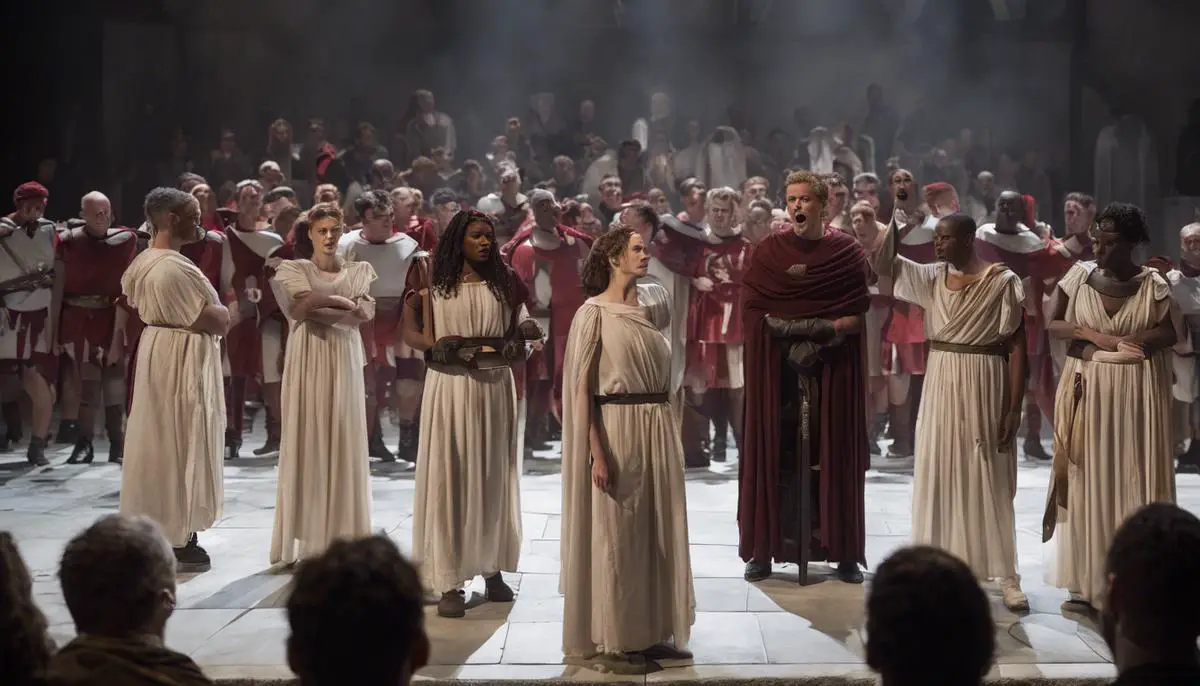
In the end, the essence of Julius Caesar's story, with its blend of historical fact and artistic interpretation, serves as a testament to the enduring allure of historical figures in shaping our understanding of leadership, morality, and human ambition. By engaging with these narratives, we not only revisit the past but also reflect on the values and challenges of our own time.
- Shakespeare W. Julius Caesar. London: First Folio; 1623.
- Plutarch. Parallel Lives: The Life of Julius Caesar. Translated by Perrin B. Cambridge: Loeb Classical Library; 1919.
- Mankiewicz JL. Cleopatra [Film]. 20th Century Fox; 1963.
- Goldsworthy A. Caesar: Life of a Colossus. New Haven: Yale University Press; 2006.
- Julius Caesar Adaptations - April 15, 2024
- Declaration of Independence - April 15, 2024
- US Civil War Analysis - April 14, 2024


